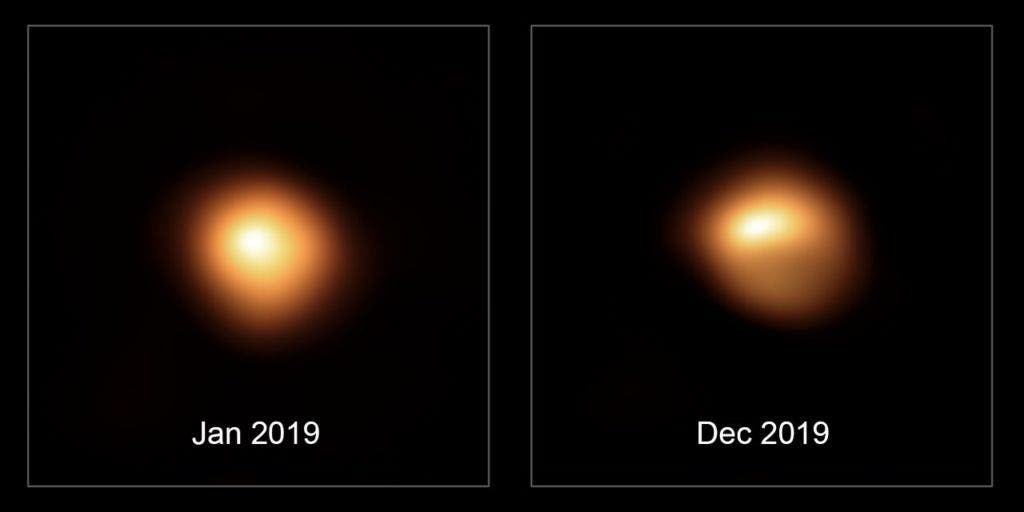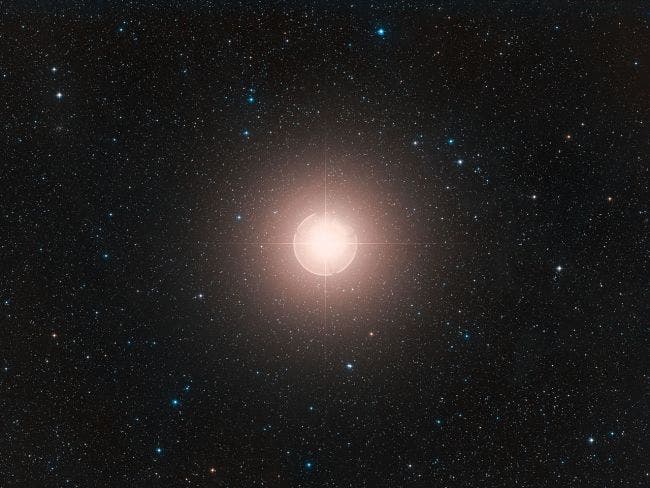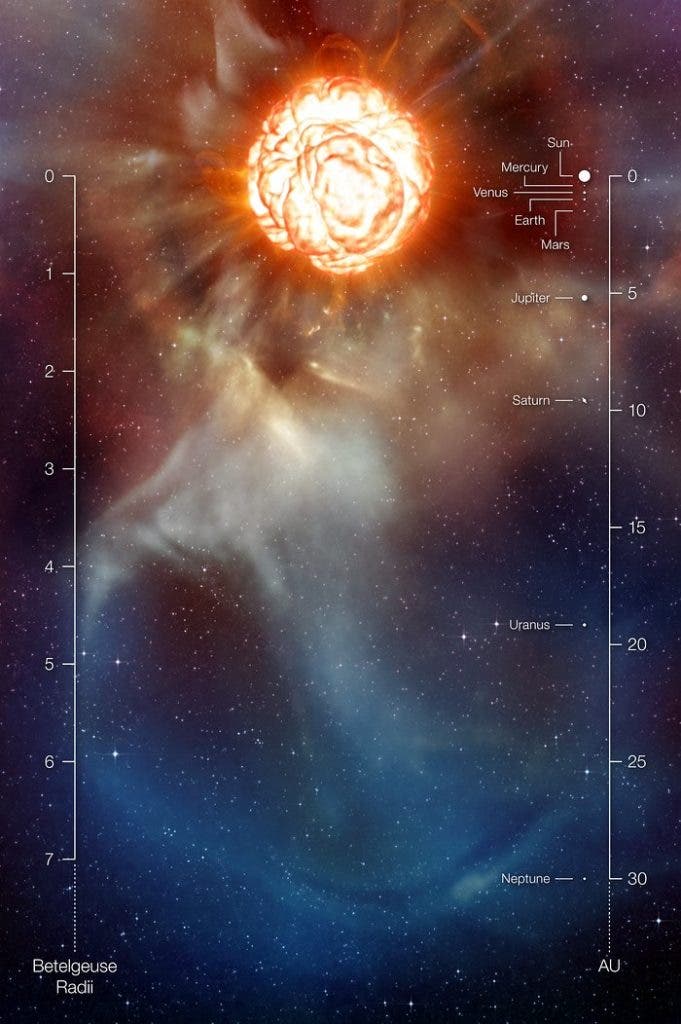
The 10-million-year-old star — a mere juvenile by stellar standards considering the Sun is 4.6 billion years old — is around 20 times more massive than the Sun and around 900 times larger. Virtually all red supergiants like Betelgeuse are destined to live fast and die young, eventually meeting their end in a supernova — the most powerful and luminous explosions known in astronomy.
Betelgeuse is a variable star, so it’s normal for it to get dimmer and brighter, but recent observations have been extremely surprising.
Astronomers operating ESO’s Very Large Telescope have found that since December of last year, Betelgeuse is now around 64% dimmer than its usual brightness.
On a normal day, Betelgeuse is the 11th brightest star in the sky, part of the Orion constellation. Today, it’s only the 24th brightest star.
These observations were made with the Spectro-Polarimetric High-contrast Exoplanet REsearch (SPHERE) instrument. This is one of the most advanced and exciting astronomical instruments equipped on an Earth-based observatory. SPHERE allows scientists to see the polarized infrared light emitted by newly forming planets (essentially just planetary disks at this point) orbiting around young stars. Apparently, it’s also sharp enough to capture extremely high-resolution pictures of Betelgeuse.
Because Betelgeuse is only 650 light-years away, and because it’s so large, astronomers were able to reveal certain features that would have otherwise been obscured, including convection cells, or granules. These are huge blobs of hot gas that have migrated from deep inside the core of the star to the surface.
The new images of Betelgeuse suggest that it has not only dimmed considerably, it also changed its shape.
Dimming red giants are believed to be a sign that they are about to imminently turn supernova.
If Betelgeuse truly was about to explode, it would be the brightest supernova ever observed in our galaxy. I’d be so brilliant that it would make it difficult to see other stars near it.

But while it’s possible that the star could explode anytime between this moment and 100,000 years from now, this dimming might not actually be a sign that it’s about to go supernova.

ESO/L. Calçada.
According to one theory, the red giant is currently undergoing a period of activity as it pulsates and as heat travels around its surface. Convection cells as big as 60% of the entire star’s size could be dimming Betelgeuse temporarily. Another explanation is that the star belched out a cloud of dust that has partially obscured our field of view.
“The two scenarios we are working on are a cooling of the surface due to exceptional stellar activity or dust ejection towards us,” said Miguel Montargès, an astronomer at KU Leuven in Belgium and the leader of the team responsible for the new observations. “Of course, our knowledge of red supergiants remains incomplete, and this is still a work in progress, so a surprise can still happen.”
So, the bottom line is that we don’t know if Betelgeuse is going to explode soon. Which is too bad — it would be quite the show if it happened during our lifetimes.
“The phrase ‘we are all made of stardust’ is one we hear a lot in popular astronomy, but where exactly does this dust come from?” says Emily Cannon, a PhD student at KU Leuven working with SPHERE images of red supergiants. “Over their lifetimes, red supergiants like Betelgeuse create and eject vast amounts of material even before they explode as supernovae. Modern technology has enabled us to study these objects, hundreds of light-years away, in unprecedented detail giving us the opportunity to unravel the mystery of what triggers their mass loss.”









